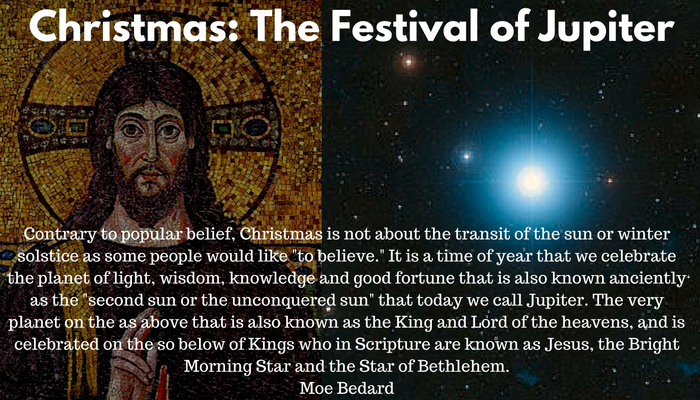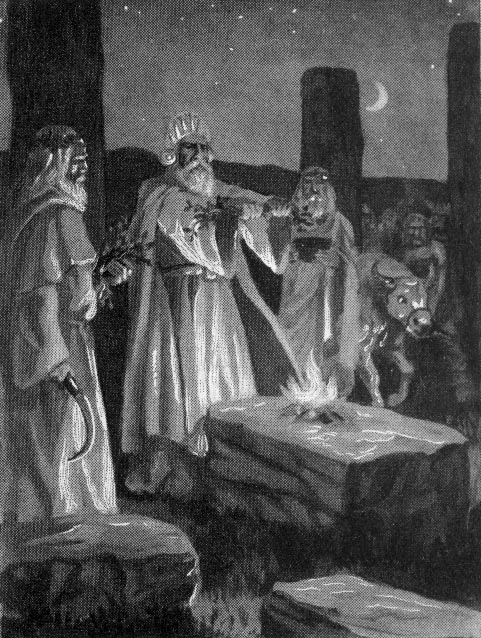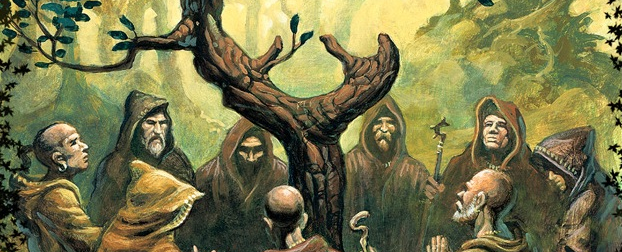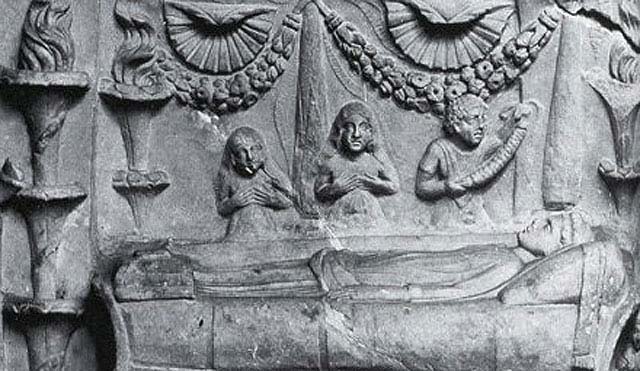By Sir Godfrey Higgins – The festival of the twenty-fifth of December was celebrated by the Druids in Britain and Ireland 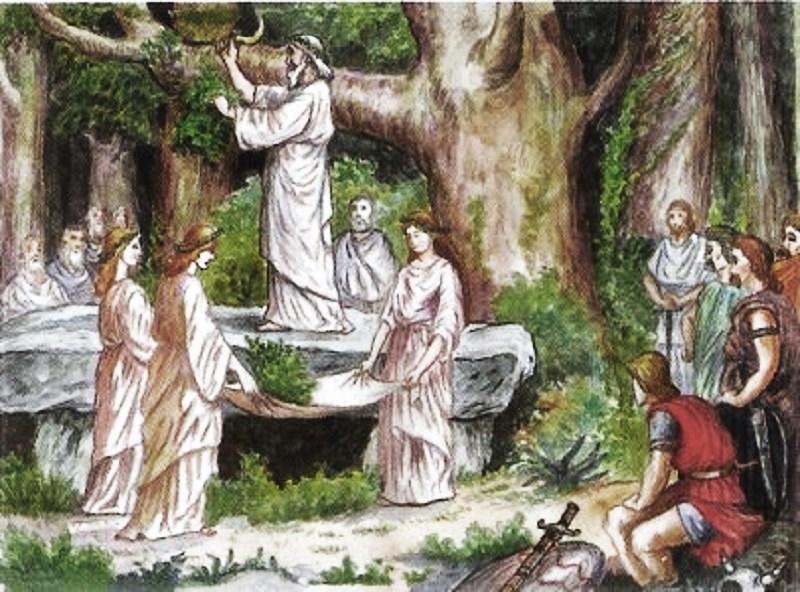 with great fires lighted on the ‘tops of the hills. This festival was repeated on the twelfth day, or on what we call the Epiphany. In some parts, the fires are still continued. We have not now remaining any documents to inform us what amongst the British Druids was the object or name of this festival, but perhaps we may gather it from circumstances.
with great fires lighted on the ‘tops of the hills. This festival was repeated on the twelfth day, or on what we call the Epiphany. In some parts, the fires are still continued. We have not now remaining any documents to inform us what amongst the British Druids was the object or name of this festival, but perhaps we may gather it from circumstances.
The order of Druids, I scarcely need observe, was as common in France as in the British isles. Christmas in France is called Noel; this word is, in fact, the Hebrew 0r Chaldee word nule. But if this be in the Chaldee dialect, the last letter may be emphatic, as it is in the word mlc-e, the kings. In this case, it may mean the parturition]; or, it may be simply the verb pariri, to bring forth. In Irish, Christmas Day is called Nolagh.
The name of Christmas Day in Cornish is Nadelig; in Armorican, Nadelek; in the Gael, Nollig.§
The evergreens, and particularly the misletoe, which are used all over the country, and even in London, in this festival, betray its Druidical origin. These had evidently nothing to do with Christianity.
* ‘Amongst the Gauls, more than a hundred years before the Christian are, in the district of Chartres, a festival was celebrated to the honour of the Virgin—Virgini pariturae.
In the year 1747, a Mithraic monument was found at Oxford, on which is exhibited a-female nursing an infant—the Goddess of the year nursing the God day. Stukeley has made a dissertation on this monument, which he shews to be a memorial of the birth of Mithra in the night of light-1′
The Protestant ought to recollect that his mode of keeping Christmas Day is only a small part of the old festival as it yet exists amongst the followers of the Romish Church. Theirs is a remnant of the old Etruscan worship of the Virgin and Child,-—the Goddess N urtia (whence our nurse). And the proof of this may be seen in Gorius’s Tuscan Antiquities, where the reader will find a print of an old Etruscan Goddess with the child in her arms. No doubt the Romish church would have claimed her for a Madonna, but most unluckily she has her name, Nurtia, in Etruscan letters, on her arm, after the Etruscan practicei This was a great festival with the Persians, who, in very early times, celebrated the birth of their God—Mithra. ‘
It was the custom of the Heathens, long before the birth of Christ, to celebrate the birth-days of their Gods. This was the example which the Christians, I think not very wisely, followed.§
Amongst these ancient festivals, Christmas Day is perhaps the most curious. The assertion here made that this is nothing more than a remnant of the worship of the Druids, at first will startle the imagination of many persons; but whether the‘ reader be a follower of the Roman church, or a Protestant, if his understanding be not completely blinded by superstition, he will instantly see that the appointment, by the rulers of the church, of a day for any particular ceremony, whether they acted from a true or a mistaken reason in selecting the day, cannot seriously affect the question of the truth of Christianity.
It is a well known fact, which the antiquarian divines of the Protestant or the Roman church will not deny, that at the time when the festivals were settled, great feuds and even civil wars took place respecting them, before they were determined. The monks of the Roman and Greek Churches were in those times the principal actors in these matters; they were few of them in orders, they were the remnants of the sect of the Essenes converted to Christianity, and much degraded and corrupted from their excellent predecessors in the time of Philo. It is not necessary to enter into this question here, but it may be shewn that there is no little probability, besides the tradition of the church, that the inscription noticed before upon the pedestal of the colossal statue of Elias, under the cupola of St. Peter at Rome, is true—Elias Fundator Ordim’s Carmelitarum.
From Elias came the Essenes, and from the Essenes the Carmelite monks, who were in fact Christian Essenes. These people, in the early and middle ages of the church, retained very little of the character given them by Philo and Josephus ; they had sunk with the prevailing degradation of the human species. If they had not done so, human nature would not have become degraded ; their exception alone would have prevented it.
These Essenes in Egypt, Persia, and other places, had probably given into the prevailing adoration of the heavenly bodies, previously to the time of Philo; and when they became converts to Christianity, they formed an odd mixture of the two religions. Their first religion, in its origin and history, was forgotten, and their new one not learned. They were probably zealous devotees, but as ignorant as the lowest of the hermits and mendicant orders of the present Italians. The grade in society of many of these people, no educated member of the Roman communion requires teaching.
By Sir Godfrey Higgins – The Celtic Druids

Moe is the founder of GnosticWarrior.com. He is a father, husband, author, martial arts black belt, and an expert in Gnosticism, the occult, and esotericism.

